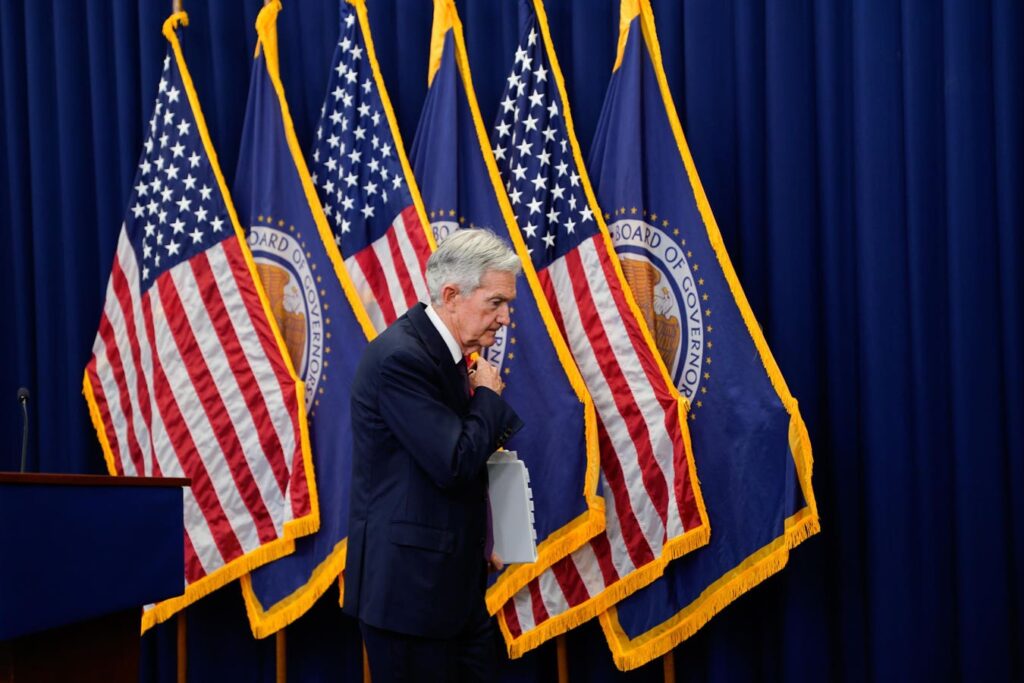Jerome Powell, chairman of the US Federal Reserve, departs following a news conference following a … More
© 2025 Bloomberg Finance LP
The Federal Market Open Market Committee expects interest rates to move down in 2025. Fixed income markets see two cuts as the most likely outcome, taking rates to 3.75% to 4% by December, down from 4% to 4.25% today. However, for quite some time, the labor market has held up better than expected. If that changed, as one FOMC policymaker recently suggested is possible, then the FOMC likely would cut rates more aggressively.
A Robust Labor Market
At the June FOMC meeting, interest rates were held at 4.25% to 4.5% as they have been since the last rate cut in December 2024. Federal Reserve Chair Jerome Powell described the labor market as “robust” and reported unemployment has held in a narrow 4% to 4.2% range for the 12 months to May 2025.
Elevated Uncertainty As Tariffs Play Out
However, economic uncertainty remains elevated, albeit somewhat lower than in April. That’s according to the Economic Policy Uncertainty Index, which is maintained by researchers at Northwestern and Stanford universities.
Powell talked about this during the press conference after the Fed’s June decision, saying. “And in particular, we feel like we’re going to learn a great deal more over the summer on tariffs. We do, we hadn’t expected them to show up much by now, and they haven’t, and we will see the extent to which they do over coming months. And I think that’s going to inform our thinking for one thing. In addition we’ll see how the labor market progresses. So, at some point it will become clear, I can’t tell you exactly when that will be, and meanwhile we’ll be watching the labor market very carefully for signs of weakness and strength, and tariffs for signs of what’s going to happen there.”
Fed Governor Raises July Cut Prospects
Fed Governor Christopher Waller said in a June 20 interview with CNBC that he could be comfortable cutting interest rates at the FOMC’s next meeting in July. However, it’s unclear that other policymakers would be willing to follow that relatively early timeline. Fixed income markets currently give just a 10% chance of a July cut, according to the CME FedWatch Tool. Current expectations are that the first rate cut may not come until the fall.
Incoming Data
The summer’s economic data will help inform how tariffs and other economic policies are shaping the economy. For now, tariffs are working through supply chains as longer-term economic relationships are negotiated. If unemployment holds close to 4% and inflation continues to ease as reported in the recent months of 2025, then the FOMC likely will cut interest rates into the fall.
However, if the labor market weakens, the FOMC could cut rates more aggressively. The biggest potential risk for policymakers theoretically comes if there were stagflation — a situation where inflation rose and unemployment increased, pulling monetary policy in two directions. Higher inflation would call for higher interest rates. Rising unemployment would call for lower interest rates. In that situation, Powell has said that officials will look at which metric is further from target in determining policy.
What To Expect
For several months, the FOMC has taken a wait and see approach for monetary policy as the impact of government policies plays out in economic data. That’s been possible due to a stable labor market and broadly cooling inflation. Over the summer, economic uncertainty may decrease and as a result, the expectations of markets and policymakers are for limited interest rate cuts. But if the labor market were to weaken more than expected while inflation remains subdued, more significant cuts are possible.



